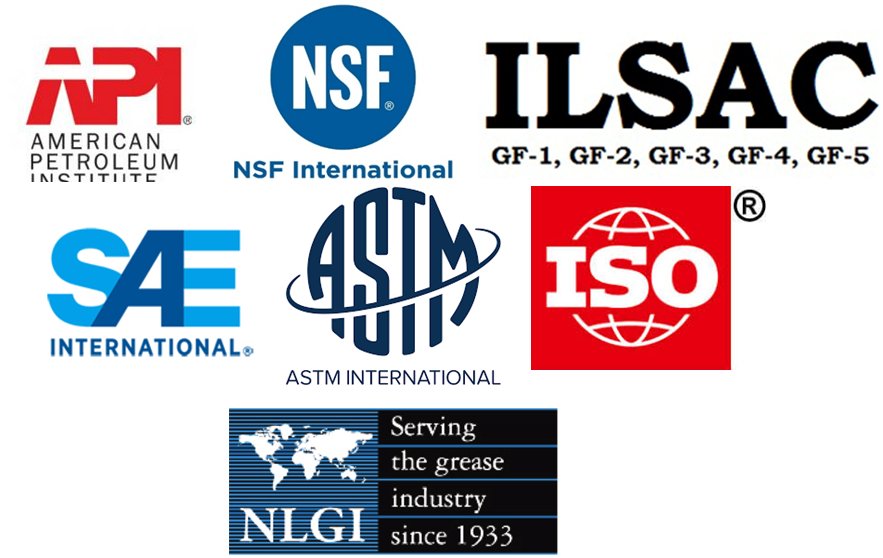Important Lubricant Organizations
There are several different organizations that are important in classifying lubricants. These organizations set standards of quality and consistency for the industry. The most well known are:
SAE International - Sets the standards for various aspects of the automotive and industries. Most commonly seen in reference to viscosity grades. The SAE is one of the premier standards for both commercial and passenger vehicles, as well as the aerospace industry. These standards are created by technical committees made up of experts in their respective fields.
ASTM International (ASTM) – Sets standards for lubricant testing requirements. Standards are created by volunteer committees of industry experts and customers. Like the API, compliance with many ASTM standards have been adopted into federal and state law. Many companies that do business internationally also reference these standards.
International Lubricant Standardization and Approval Committee (ILSAC) – Created by automakers. ILSAC also has a set of standards for oil quality and often works closely with the API. The group was formed in 1992 by American and Japanese automaker organizations, along with representatives from Chrysler, Ford and General Motors. The group’s standards often require lubricants to meet API standars while also passing additional tests. Lubricants that meet these standards will usually include the API starburst or doughnut logos.
International Organization for Standardization (ISO) – International developer of voluntary standards, many of which impact lubricants and equipment[JS1] . ISO has a huge catalog of standards that cover just about every industry. Their standards are universally recognized and following them is considered a best practice by many.
National Lubricating Grease Institute (NLGI) – The NLGI is a trade association made up of grease manufacturers and consumers. Unlike the other organizations, they focus on one specific product and their classifications can help users determine which greases fit OEM or other specifications.

Read More:
